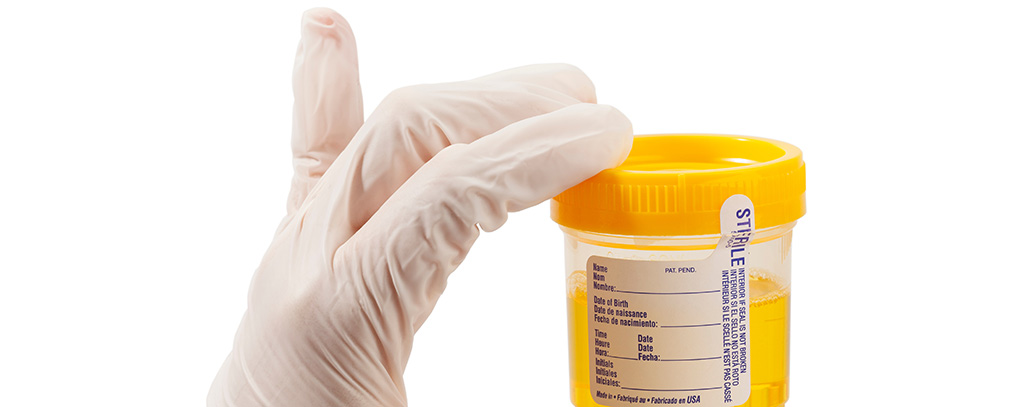


What is ETG on a Drug Test: A Guide for Companies
May 11, 2023


Saliva Drug Tests for Employers: Comprehensive Guide
May 20, 2023Does methadone show up on a 10 panel drug test? This is a critical question for companies that purchase drug testing supplies, as well as individuals undergoing addiction treatment. Methadone, a synthetic opioid with potential for misuse or abuse if not taken properly, is thus an important substance to detect accurately. As such, accurate detection of this controlled substance in the workplace or during treatment is essential.
In this blog post, we will examine the nuances of methadone use and its detection via different drug tests. We will begin by discussing what methadone is, its uses and side effects. Then we will explore whether a standard 10 panel drug test can detect methadone use and how long it stays in one's system.
In addition, we will look into various drug tests which are tailored to detect methadone consumption - such as urine checks, hair follicle testing and saliva screening - while also evaluating their precision and dependability. By understanding these aspects surrounding the question "does methadone show up on a 10 panel drug test?", you'll be better equipped to make informed decisions regarding your company's drug testing policies or personal addiction treatment journey.
Table of contents
- What is Methadone?
- Definition of Methadone
- Uses of Methadone
- Side Effects of Methadone
- Does Methadone Show Up on a 10 Panel Drug Test?
- Types of Drug Tests for Detecting Methadone Use
- Accuracy and Reliability of Drug Tests for Detecting Methadone Use
- Detection of Methadone on a 10 Panel Drug Test: Key Takeaways
- Frequently Asked Questions Does Methadone Show Up on a 10 Panel Drug Test?
- Conclusion
What is Methadone?
Methadone, a synthetic opioid often used in treating opioid addiction, can help alleviate withdrawal symptoms and cravings associated with opioids like heroin and prescription painkillers. It helps reduce withdrawal symptoms and cravings associated with opioids like heroin and prescription painkillers. In this section, we will discuss the definition of methadone, its uses, and potential side effects.
Definition of Methadone
Methadone is a long-acting synthetic opioid that binds to the same receptors in the brain as other opioids, but does not induce the same euphoric high. However, it does not produce the same euphoric high typically experienced with these drugs. Instead, methadone provides relief from withdrawal symptoms without causing intense feelings of pleasure or sedation.
Uses of Methadone
- Opioid Addiction Treatment: One primary use for methadone is in treating patients who are struggling with an addiction to opioids like heroin or prescription pain medications. By providing stable levels of the drug in their system through daily doses at specialized clinics called meth-ad-one treatment programs (OTP), patients can gradually taper off their dependence on illicit substances while avoiding severe withdrawal symptoms.
- Pain Management: In some cases, healthcare providers may prescribe meth-ad-one for chronic pain management due to its long-lasting analgesic properties. This use should be carefully monitored by medical professionals because there's still potential risk for abuse and dependency when using it outside OTP settings.
Side Effects of Methadone
While meth-ad-one can be an effective treatment option for those struggling with opioid addiction, it is not without its side effects. Some common side effects include:
- Drowsiness or sedation
- Nausea and vomiting
- Constipation
- Sweating and itching
- Respiratory depression (slowed breathing).
Methadone, a potent medication for pain and opioid addiction management, carries with it potential dangers and adverse reactions. Therefore, it's important to understand if methadone shows up on a 10 panel drug test before using this type of testing in your workplace.
Does Methadone Show Up on a 10 Panel Drug Test?
In this section, we will explore whether methadone can be detected in a standard 10 panel drug test and discuss the factors that may affect its detection.
Overview of 10 Panel Drug Tests
A 10 panel drug test is commonly used by employers to screen for various substances in an individual's system. This type of test typically checks for the presence of ten different drugs, including:
- Marijuana (THC)
- Cocaine (COC)
- Opiates (OPI)
- Amphetamines (AMP)
- Methamphetamine (mAMP or MET)
- Phencyclidine (PCP)
- Benzodiazepines (BZO)
- Barbiturates(BARB)
- Methadone(MTD )
- Propoxyphene(PPX)
How Long Does Methadone Stay in the System?
The elimination rate of methadone varies due to factors such as metabolism, body mass index, hydration levels and usage frequency. Generally speaking ,methadone has a half-life ranging from 8 to 59 hours .This means it takes approximately this amount of time for half the ingested dose to be eliminated from the body. Urine tests can typically detect methadone for up to 3 days after the last dose, while hair follicle tests may be able to identify its presence for several months .
Does a 10 Panel Drug Test Detect Methadone?
Yes, a standard 10 panel drug test does include testing for methadone (MTD). If someone has used or is using MTD, a 10 panel drug test will likely indicate it. It's worth noting, however, that not all drug tests are equal; some versions of the 10 panel test may not check for MTD specifically.
In cases where employers or other organizations require more comprehensive testing, they might opt for an expanded panel drug test, which screens for additional substances beyond those included in the standard 10 panel test.
In conclusion, it is worth emphasizing that 10 panel drug tests will not detect methadone. However, there are other types of tests available for detecting the presence of this substance in an individual's system.
Types of Drug Tests for Detecting Methadone Use
Detecting methadone use in individuals is crucial for companies to maintain a drug-free workplace and ensure employee safety. Different types of drug tests are available to detect methadone in individuals, each having its own pros and cons. In this section, we will discuss three common methods: urine tests, hair follicle tests, and saliva tests.
Urine Tests for Detecting Methadone Use
Urine testing is one of the most widely used methods for detecting drugs due to its affordability, ease of administration, and accuracy. Urine tests can typically detect methadone within 2-4 hours after ingestion and remain effective up to 7 days post-consumption depending on factors such as dosage frequency and individual metabolism rates.
- Pros: Affordable; easy to administer; accurate results when done correctly.
- Cons: May not be able to detect recent usage (within 1-2 hours); potential privacy concerns during sample collection process.
Hair Follicle Tests for Detecting Methadone Use
A hair follicle test, while more expensive than urine testing, provides a longer detection window - up to 90 days after last use - making it ideal for identifying long-term or chronic users. This type of test analyzes hair samples collected from the scalp or body hair by measuring the presence of methadone and its metabolites.
- Pros: Longer detection window; non-invasive sample collection process; difficult to tamper with or manipulate results.
- Cons: More expensive than urine tests; may not detect recent usage (within 1-2 weeks); potential bias against individuals with darker hair color due to higher concentrations of melanin, which can affect test results.
Saliva Tests for Detecting Methadone Use
Saliva testing, also known as oral fluid testing, is a relatively newer method for detecting drug use. It involves collecting a saliva sample from the individual's mouth using a swab or similar device. Saliva tests can typically detect methadone within 30 minutes after ingestion and remain effective up to 48 hours post-consumption depending on factors such as dosage frequency and individual metabolism rates.
- Pros: Non-invasive sample collection process; quick detection time compared to other methods; less prone to adulteration than urine samples.
- Cons: Shorter detection window compared to hair follicle tests; more expensive than urine tests but cheaper than hair follicle tests;.
In sum, the techniques employed to recognize methadone consumption can be trusted to identify it accurately and dependably in a person's system. Next, let's evaluate the precision and dependability of these drug tests when it comes to recognizing methadone use.
Accuracy and Reliability of Drug Tests for Detecting Methadone Use
The accuracy and reliability of drug tests for detecting methadone use are paramount to ensure dependable results. Various factors can affect the outcomes of these tests, making it essential for companies to understand their limitations.
Factors Affecting the Accuracy and Reliability of Drug Tests for Detecting Methadone Use
- Detection window: The time frame during which methadone can be detected varies depending on the type of test used. For example, urine tests typically have a detection window of up to seven days after last use, while hair follicle tests can detect methadone usage up to 90 days after last use. This means that recent users may not be identified if tested outside this detection window.
- Cross-reactivity: Some substances may cause false-positive results due to cross-reactivity with other drugs or medications present in an individual's system. It is important for testing facilities to utilize specific testing methods designed explicitly for detecting methadone use.
- User-specific factors: Factors such as metabolism rate, body mass index (BMI), hydration levels, and frequency/duration of drug usage can impact how long methadone remains detectable in an individual's system. These variables make it difficult to determine precise detection windows universally applicable across all individuals.
Limitations of Drug Testing for Detecting Methadone Use
No single drug test is perfect; each has its own set of limitations when it comes down to accurately identifying methadone usage among employees or potential hires.
- Failing sensitivity: Some drug tests may not be sensitive enough to detect low levels of methadone, leading to false-negative results. This can occur if an individual has recently started using the drug or is taking a lower dosage.
- False positives: In some cases, other substances present in an individual's system might cause a false-positive result for methadone. For example, certain over-the-counter medications and prescription drugs have been known to trigger positive test results when they are not actually indicative of illicit substance use.
- Tampering: Individuals who are aware that they will undergo drug testing may attempt various methods to tamper with their samples or mask the presence of methadone in their systems. Companies should ensure that proper protocols are followed during sample collection and processing stages to minimize these risks.
To improve accuracy and reliability when detecting methadone usage through drug testing, companies should consider utilizing multiple types of tests (such as urine, hair follicle, and saliva) alongside each other. Additionally, it is essential for employers to work closely with reputable laboratories experienced in handling these specific types of analyses. By doing so, businesses can make more informed decisions about employee health while minimizing potential legal liabilities associated with inaccurate test results.(source)
The precision and dependability of drug tests for recognizing methadone utilization can vary significantly contingent upon the kind of test used and its level of sensitivity. Therefore, it is important to understand these limitations in order to properly assess the effectiveness of a 10 panel drug test when attempting to detect methadone usage.
Detection of Methadone on a 10 Panel Drug Test: Key Takeaways
When it comes to detecting methadone use in drug testing, understanding the limitations and capabilities of different test types is crucial for both employers and individuals. This section highlights the key findings regarding methadone detection on a 10 panel drug test.
Detection Capabilities of 10 Panel Drug Tests
A standard 10 panel drug test typically does not include methadone in its list of tested substances. However, customized tests can be ordered to specifically screen for methadone alongside other commonly abused drugs.
Methadone Detection Timeframes
- Urine: Methadone can be detected in urine samples for up to three days after last use.
- Hair Follicle: Hair follicle tests have a longer detection window, with traces of methadone remaining detectable for up to three months following consumption.
- Saliva: Saliva-based tests offer a shorter timeframe than urine or hair follicle tests but are still capable of identifying recent usage within one day post-ingestion.
Factors Affecting Accuracy and Reliability
The accuracy and dependability of drug testing techniques can be influenced by several elements, including individual metabolic rates, the frequency and length of substance use, sample collection processes, laboratory protocols, and potential cross-reactivity with other medications or substances. To ensure accurate results when screening for methadone specifically , it's essential that companies choose reputable suppliers like Halux Diagnostic for their drug testing needs.
Customizing Drug Tests to Detect Methadone
If methadone detection is a priority, companies can opt for customized drug tests that include screening for this substance. By working with reliable suppliers and laboratories, employers can ensure they have access to accurate and comprehensive test results that meet their specific requirements.
Frequently Asked Questions Does Methadone Show Up on a 10 Panel Drug Test?
Does a 10 panel drug test test for methadone?
A standard 10 panel drug test does not typically include methadone. However, customized tests can be designed to specifically detect methadone if required.
Will positive methadone show up on a urine drug screen?
Methadone will show up on a urine drug screen if the test is specifically designed to detect it. Standard panels may not include methadone testing, so ensure that the chosen test includes this substance.
What is shown on a 10 panel drug screen?
A 10 panel drug screen typically tests for substances such as amphetamines, barbiturates, benzodiazepines, cocaine metabolites, marijuana metabolites (THC), opiates (morphine and codeine), phencyclidine (PCP), propoxyphene, and synthetic opioids like oxycodone and hydrocodone.
What does methadone show up as on a screen?
On a specific Methadone test or an extended opioid screening panel, Methadol or EDDP(metabolite of Methadol) is detected. Methadol has unique chemical structure & doesn't cross-react with other opioids, making its detection exclusive in specialized screenings
Conclusion
In conclusion, it is important to understand that methadone does show up on a 10 panel drug test. Yet, other tests may be more precise and dependable in detecting methadone consumption. It is essential for companies who purchase drug testing supplies to consider the accuracy and reliability of their chosen method when determining whether or not they should include methadone as part of their screening process.
If you are in need of drug testing supplies to determine if methadone is present, Halux Diagnostic can provide the reliable and accurate solutions that meet your needs. Contact us today for more information on our 10 panel drug test offerings.





